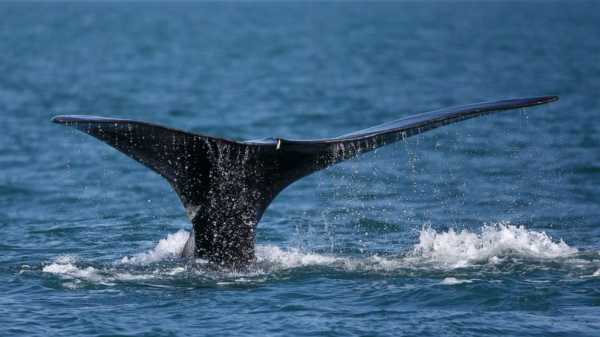
The hotel Regina Asmutis-Silvia, biologist, devoted his career to saving the whales, cleaning the file Cabinet since the early 1990s, and the documents inside to tell a familiar story — whales die from collisions with ships and entanglements in commercial fishing gear and species may not survive.
Fast forward a quarter of a century freestyle-the movement forward, and the same thing happened.
“It’s a little scary to think if we hadn’t worked all these years, they were part of history, not Cape cod Bay?”, said Asmutis-Silvia, Plymouth, Massachusetts-whale and Dolphin conservation. “We stand on the rock and go is important, they’re still here, they have something to fight for’.”
Despite eight decades of conservation efforts, North Atlantic whales are faced with a new crisis. The threat of extinction within one generation looms, and the movement for the conservation of whales, trying to come up with new solutions.
Whales are one of the rarest mammals in the world, numbering about 450. 100,000-pound animals were even closer to the brink of extinction and efforts to save them galvanized one of the most notable movements for the conservation of wildlife in U.S. history.
But the population drops again due to poor reproduction combined with high mortality from ship strikes and entanglement. Scientists, environmentalists, whale watching captains and animal lovers of all stripes are called upon to renew interest in the preservation of whales, but many recognize the feeling close to defeated.
Charles “stormy” Mayo, Director of the program on ecology of whales of the center for coastal studies in Provincetown, and other scientists say that the species could be extinct as soon as 2041. Mayo, ninth generation resident of Cape cod, whose ancestors hunted whales in the 18th and 19th centuries, now leads expeditions to find the animals and try to find out how to save them.
“There is a fair amount of sadness when dealing with these creatures. They are on the verge of extinction now, and their future is in doubt”, – he said. “I don’t think any of us is not recommended, but many of us are afraid. Of course, I will.”
The decline of whales dates back to the era of whaling centuries ago, when they were selected as the “right” whales to hunt because they were slow, and floated when killed. They were collected for their oil and meat, and can be reduced to double digits, until it took in 1935 of international protection.
Saving the whales has become an international cause, promoting environmentalists, scientists and the U.S. government, and their population grew to about 275 in 1990 and 500 around 2010. But then everything changed.
Scientists are still trying to figure out why whales lost in just eight years, about 10% of its population, and one is the hypothesis of guilt to the warming of the Atlantic ocean. Whales migrate from Georgia and Florida to New England and Canada every year in search of food. They are using a complex system of specially protected natural territories, rules of navigation and fisheries constraints, which try to ensure safe passage as they gorge on copepods, crustaceans the size of a flea.
But as the water warmed, tiny organisms, they must survive appear to be moving, and whales are sometimes exposing themselves to danger, said mark Baumgartner, a scientist with the woods hole Oceanographic institution. They simply do not have enough food, he said.
“Whales are moving around much more and they don’t find food,” – said the fishermen at the Maine fishermen’s Forum in early March.
Last year there were 17 confirmed deaths of right whales — a dozen in Canada, the rest of the US. Scientists have not yet observed this year, no new right leg of the whale, the other is a heavy development.
Defenders of the whales turned to promoting innovation, interaction with commercial fishing groups are calling for the acceleration of new remedies in the United States and Canada. But it’s a tough fight met the state bureaucracy and skeptical of industries concerned about their own survival.
Baumgartner held their presentations at the Maine Fishermen’s forum about a new technology that uses a modem to find and remove the lobster line from the bottom of the ocean. Innovation can reduce the amount of fishing line that can cause whales to get confused and slowly suffocate.
There was grumbling of the fishermen who doubted the viability of new equipment. One shouted: “have You ever been on a lobster boat?”
Group of environmental advocates filed this year in Federal court accusing the national marine fisheries service is not doing enough to protect whales from fishing gear.
Still, advocates see several reasons for optimism. Canada recently announced steps to protect whales, changing season dates snow crab and to establish a permanent speed limit in the Gulf of St. Lawrence.
And this winter, scientists observed the behavior called “surface active groups” for the first time in a year. Whales at the surface for men to compete to mate with the female, which, as scientists hope that portends for the whale in the future.
“They can recover. They’re not bad types,” said Asmutis-Silvia. “We just have to stop killing them.”
Sourse: abcnews.go.com






